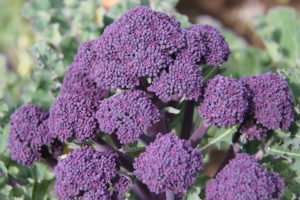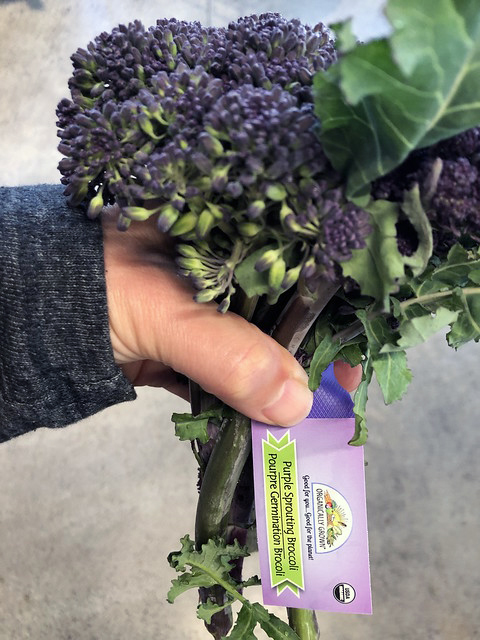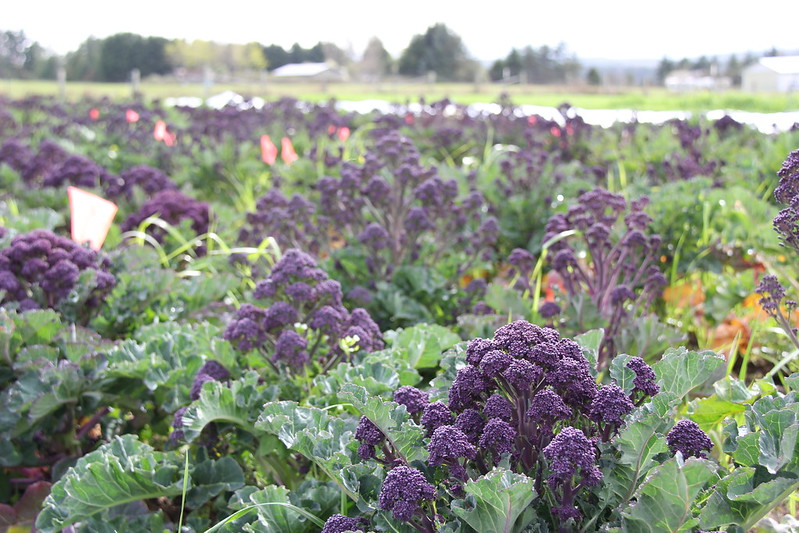
The long awaited spring is here at last. Sunlight warms our skin and the soil, signaling the beginnings of a new growing season and the desire for fresh spring produce.
Right now in Western Washington, farmers are harvesting a crop that has weathered the long winter: Purple Sprouting Broccoli (PSB).
PSB is planted in the late summer and overwinters in the field, providing spring’s first bounty for eaters needing a reprieve from winter cuisine. And for growers preparing for spring planting, PSB supplements cash flow during a time that is otherwise characterized by costly investments, such as seeds, soil amendments, and labor.
In the wake of the COVID-19 pandemic, farmers across the U.S. are finding themselves on the front lines of ensuring food security and community resilience. With restaurant closures and cancellation of many farmers markets, producers are facing unexpected losses of income streams. It’s crucial that we support our local farms during this time especially. One way we can do that is to eat local produce.
If you’re in the Pacific Northwest, purple sprouting broccoli is a timely and delicious option to do it! You can find it in stores and at farm stands for the next 6 to 8 weeks.

Digging into the Brassica Details
PSB is a type of broccoli (brassica oleracea) that is distinct for its many florets, tender stalks, and ability to grow slowly throughout temperate winters. Its purple color is caused by anthocyanin, an antioxidant compound that helps protect the plant.
It’s easy confuse PSB with Broccolini which is a hybrid cross of broccoli and gai-lan, and the two are often sold in floret bunches side by side on produce shelves. However, spring Broccolini is usually grown in California or Arizona, whereas PSB is usually grown right here in the Pacific Northwest.
Breeding for Regional Identity
Organic Seed Alliance is collaborating with Pacific Northwest farmers, chefs, and retailers to promote the benefits PSB has to offer the regional food system.
In 2009, we began research to enhance PSB’s agronomic performance in the area. Today, we are working to increase farmers’ success with growing PSB thanks to a Washington State Specialty Crops Block Grant. We’re developing resources for growers, including increased access to organic seed, information on seed and crop production, and support for market development and promotion.
OSA is working with multiple farms across five counties in Western Washington to conduct PSB variety trials. We’re using data from these on-farm trials to develop enterprise budgets and production recommendations for farmers interested in growing PSB. These open-source resources will be available in OSA’s online resource library in autumn of 2020.

When to Plant: Finding the Sweet Spot
Growing PSB over the winter is a balancing act for Pacific Northwest growers. Transplanted too early, the broccoli plants will be too large and invest too much of their energy in vulnerable foliage to handle sub-freezing temperatures without sustaining yield reducing damage. Transplanted too late and the plants won’t be large enough to produce robust sprouts.
Trials replicated at OSA’s Washington research farm are aimed at identifying the ideal planting window for spring harvest. Four identical plantings of seven varieties were staggered two weeks apart, from late July to early September. Among the seven varieties observed, there are three maturation windows: early, mid-season, and late. These trials will help growers determine ideal planting dates for each variety.
A Call to Action
Our work with farmers to adapt crops that thrive in their regions is one of many ways that OSA is fortifying local food security. As eaters, we possess the crucial power of voting with our dollars to determine the success of regional projects like purple sprouting broccoli.
Learn about varieties that grow well in your region. Buy them. Eat them. Love them.
There’s never been a more important time to show your support for your local farmers.
